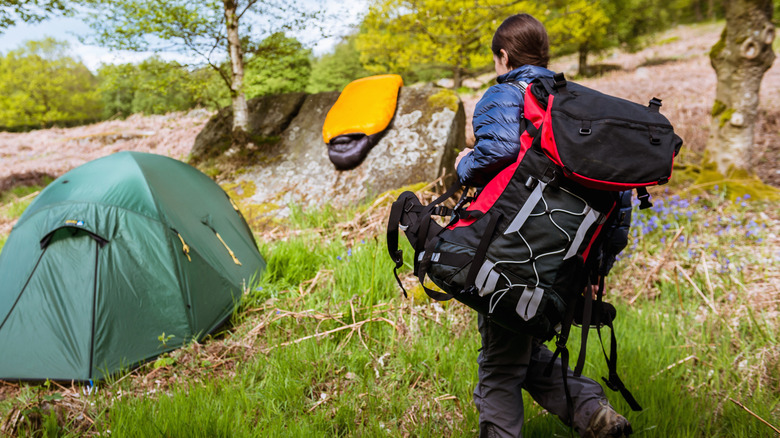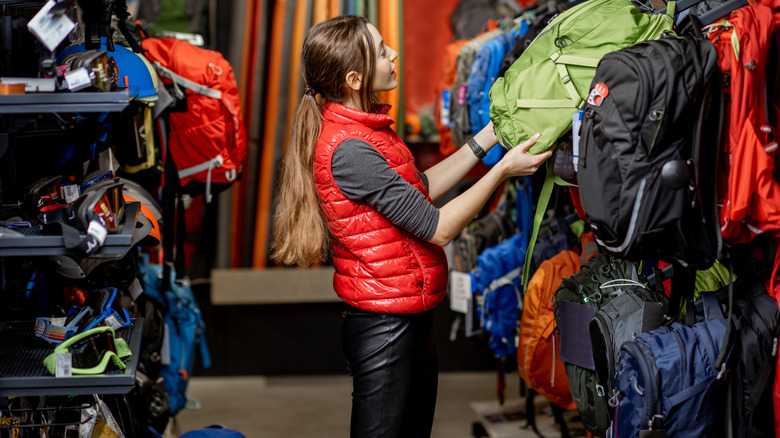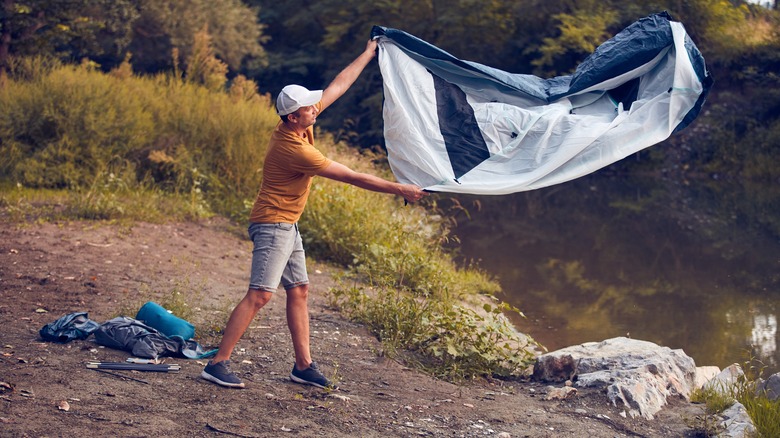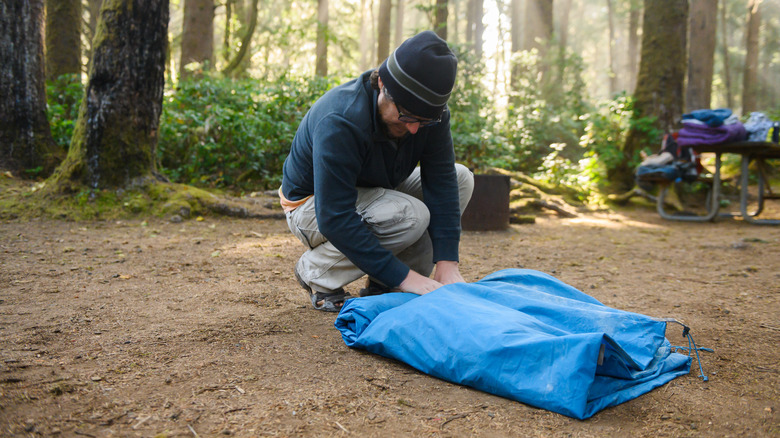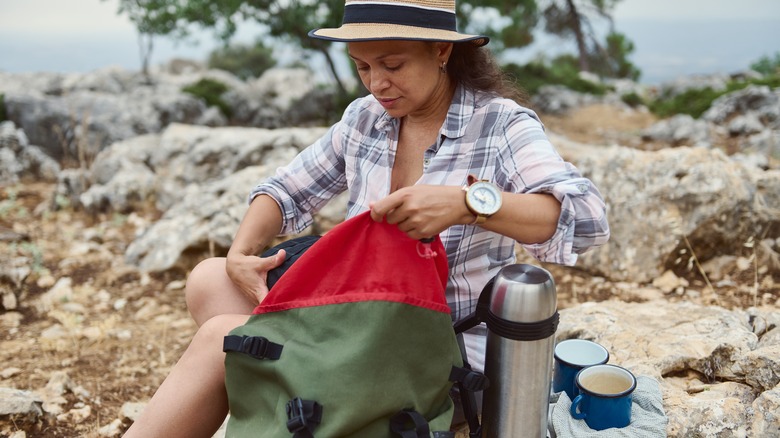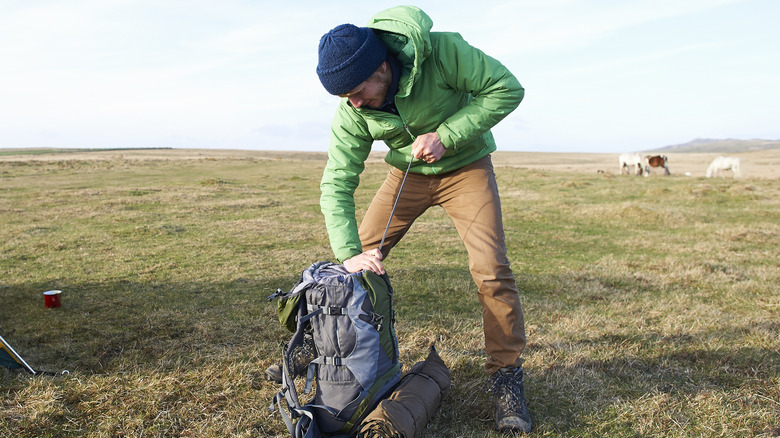Simple Tips To Make Carrying A Tent While Backpacking Easier
Hiking and camping have long been among the most popular outdoor activities throughout North America. In fact, recent studies show camping is actually the fastest growing outdoor activity in the United States. When it comes to tent camping, the tent itself is often one of the bulkiest, albeit most essential, items you need to pack. If you are driving up to your campsite, the task of bringing a tent is minimal.
On the other hand, if you are backpacking to your campsite, carrying a tent can become quite a chore. This job can become even more cumbersome if you are taking a solo backpacking trip and need to carry all of your camping supplies yourself. The distance and type of terrain you must cover can also add to the difficulty, whether you are alone or in a group. However, you can make backpack camping much less daunting with these simple tips to make carrying a tent while backpacking easier.
Choose the right backpack and tent
The first thing you can do to make carrying a tent while backpacking easier happens before you even leave for your trip. In order to be efficient during your backpack camping trip, you need to choose the right backpack and tent to fit your needs for that specific trip. This may change from trip to trip, so it is possible you will need more than one of each. For instance, if you are going camping alone, there is no need to lug a four-person tent. A small, lighter solo tent will be easier to pack, carry, and set up by yourself. According to REI, there are four things you should consider when choosing a backpacking tent. First is the number of people it is designed to sleep. Next are the weather conditions and seasons the tent will be used in, along with how much it weighs. Finally, take into account the ease of use.
Next, choose your backpack. Again, different trips may require different backpacks. The pack should be large enough to carry your tent and any other necessary gear, but not excessively large. Shorter trips tend to require smaller packs and vice-versa. You should also consider the features, such as pocketing and straps, and ensure the pack properly fits your body.
Properly prepare the tent for packing
The next thing is to properly prepare the tent for packing. This needs to happen both when you are packing to leave the house as well as when you break camp. Before it is rolled and packed, the tent should be empty, clean, and completely dry, if possible. If you are getting ready to leave the house, take the tent out and hang it to air dry to remove any moisture that may have accumulated while it was stored.
If you are breaking camp, make sure all items are removed from the tent — be sure to double-check any storage pockets — and sweep it clean. It is ideal to be able to shake the tent out and hang it in a sunny spot to allow it to dry before packing it up. This is a good idea even if you haven't experienced rain, as ground moisture, dew, and humidity can still lead to dampness in a tent. This can be done while you go about preparing breakfast and/or gathering the rest of your camp supplies.
Efficiently roll your tent
Once the tent is dry, it is ready to be packed. But, before it can be put in your backpack, it must first be stuffed back into the tent bag. In order to accomplish that, you need to efficiently roll your tent and place the poles, stakes, rain fly, and tent in the bag in proper order.
The first step is to lay the tent flat. If you have a tent fly, lay it flat on top of the tent. Next, put the tent poles in the tent pole sack and place them next to one corner of the tent. This will give you an accurate measure of the width the tent needs to be folded to in order to fit. Fold the tent so that you have one long strip that is the same width as the tent pole sack. Place the tent pole sack on the end of the folded tent and begin rolling toward the opposite end, pressing the air out as you go. Be sure to roll the tent tightly. After rolling a few times, place the tent stake sack on the tent and continue to roll. When it is completely rolled, place the tent in the tent bag and pull the drawstring tight.
Pack other items in your backpack while leaving room for your tent
The tent should not be the first thing to go in your backpack nor should it be the last. Rather, you should begin by packing some items in your backpack before placing the tent inside. It is a good idea to place some heavier items in the bottom of the backpack first. As you pack, be mindful both to leave space for the tent and also to balance the load in your pack. Placing light objects in the bottom of your pack or putting too much weight on one side or the other are packing mistakes to avoid, as they can result in damage to the lighter items and make them harder to access. Likewise, an unbalanced pack can make your hike more difficult.
Once you have packed everything that will go beneath the tent, leave the remaining items on the side. It is helpful to lay them out sorted by size so you can easily see what needs to be put in the pack once the tent is placed inside.
Balance your load when packing your tent in your backpack
When it comes to packing the tent and remaining items in your backpack, you need to consider how to pack the tent bag. The tent can be packed either vertically or horizontally. Each way has advantages and disadvantages. Packing the tent horizontally means laying it parallel to the bottom of the backpack. In this position, you can pack heavier items beneath the tent and lighter items above it. But, it can make accessing the tent as well as items beneath it more difficult.
If the tent is packed vertically, or perpendicular to the bottom of the backpack, it will be much easier to remove it from the pack when necessary. It is also easier to access items on either side of the tent within the pack. However, it can be a bit more challenging to keep the pack balanced. Additionally, if packing the tent vertically, keep in mind the height of the tent bag when you start adding items to the bottom of the pack. Do not pack so much beneath where the tent bag will be placed so that it makes it impossible to close the backpack once the tent is inside.
Regardless of which method you choose, once the tent is placed in the backpack, you can add the remaining items. Again, pay attention to weight and accessibility. Be sure to place lighter items, as well as those you need to quickly access, nearer to the top. Once packing is complete, try the back out for comfort and balance. Make any necessary adjustments before beginning your hike.
